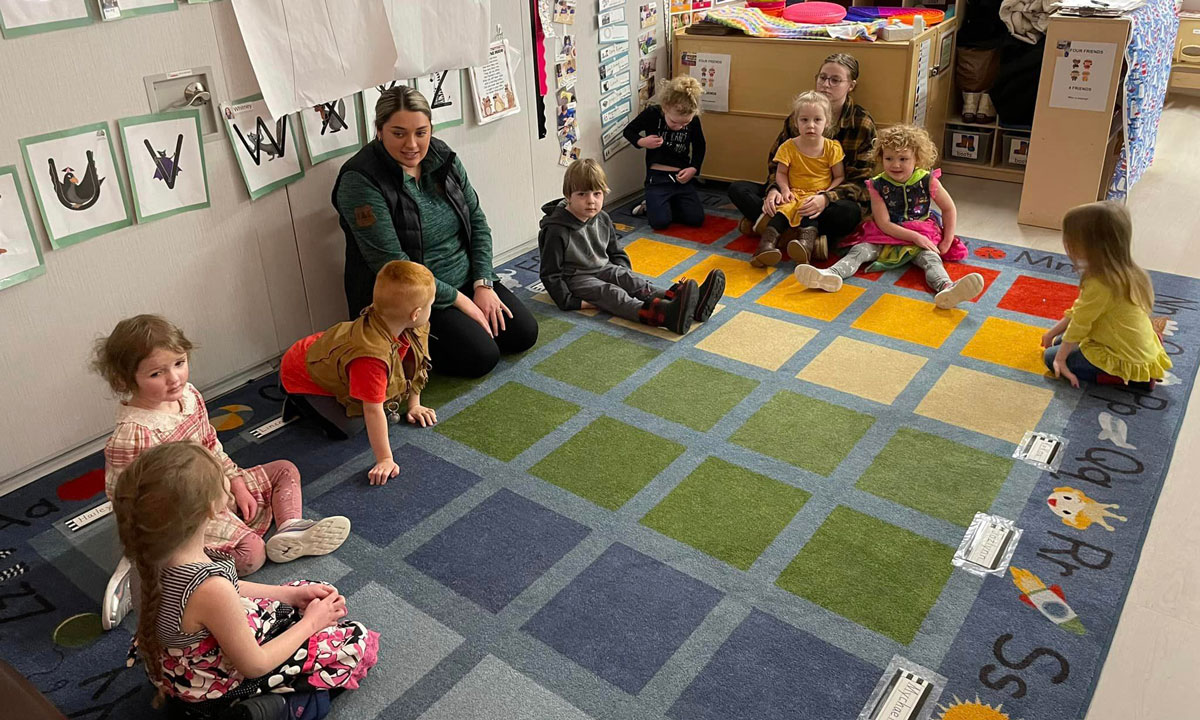Alaska Head Start Programs Are Watching a Biden Plan That Would Increase Salaries
Without increased federal or state funding, Alaska programs say they will have to serve fewer children.

Get stories like this delivered straight to your inbox. Sign up for The 74 Newsletter
Head Start, the federally-funded early childhood program for children from low-income families, is Alaska’s largest early childhood program.
Head Start programs have been among the child care and early education centers clamoring for financial help in recent years as they struggle to pay staff and keep prices in the range that families can afford.
A proposal from the Biden administration would increase the pay for Head Start teachers, whose salaries have not kept pace with other industries, said Khari Garvin, director of the Office of Head Start at the Administration for Children and Families at the U.S. Department of Health and Human Services. He visited Alaska last month.
“The feedback that was shared in Alaska is consistent with what we have tended to hear from other programs across the country as well,” Garvin said. “Some of these programs have had to, unfortunately, close some classrooms because they just have not had the opportunity to hire all of the qualified staff that they needed, including teachers.”

The proposed rule would raise the average Head Start teacher salary $10,000, improve benefits, and increase access to mental health supports. These changes are all responses to the early child care workforce crisis that has closed 1 in 5 Head Start classrooms nationwide, despite waiting lists for children to get into programs.
Once a final rule is published, Garvin said, it can be funded one of two ways: Congress can allocate the money necessary to boost staff pay for Head Start, or, if Congress doesn’t fund or fully fund the rule, individual Head Start Programs will have to work within their budgets to make the salary changes.
Mark Lackey, the Chair of the Government Affairs Committee for the National Head Start Association, runs five Head Start programs in the Mat-Su Borough. He said Congress and the state of Alaska have under-funded the Head Start program for years, so it will be hard to come up with the money to substantially raise wages.
“Maybe we’ll have kids draw dollar bills, and we’ll see if we can cash those,” he joked before underlining the serious trade-off to wage increases without funding increases. “It is possible. And the way it will be possible is that programs will have to sacrifice a lot of child slots.”
Lackey is not filling all the slots he has available for children because he doesn’t have enough staff, even though demand for child care and early childhood education is as high as ever — he has had a waiting list at his programs since before the pandemic.
He said that, like most Head Start programs nationally, he can only fill about 80% of his staff positions and most departing teachers say they leave because of the low wage. Lackey said he has hired 150 people in the last two years and is still short-staffed because most of them have left for higher wages elsewhere.
“There’s no doubt my wages need to be higher. If they want me to pay higher wages with the same amount of money, the only option I have is to serve many fewer children,” he said.
Lackey said the $10,000 boost to wages wouldn’t even get his employee salaries as high as they need to be competitive. The federal government suggests that Head Start wages should come into line with teacher wages, which are higher, by 2030. Nationally, the average Kindergarten teacher makes roughly $58,000 a year; Lackey said wages for his Head Start staff are in line with the national average annual salary of $38,000.
Most money for the Head Start program comes from the federal government. Individual programs must make a 20% contribution to be eligible for federal funding. The state of Alaska used to fully support that match for Head Start, but stopped increasing the amount of funding it contributed in 2010. Due to inflation, the state now pays roughly 11% of the match, Lackey said.
This year the state’s Legislature earmarked $5 million for an increase to Alaska’s Head Start so programs could better match federal contributions and pay staff more, but Gov. Mike Dunleavy vetoed most of it, cutting the increase to $1.5 million.
The new proposed rule will be published to the federal register on Monday, Nov. 20 and the public will have 60 days to comment. There is no final date for the rule to be enacted.
Alaska Beacon is part of States Newsroom, a network of news bureaus supported by grants and a coalition of donors as a 501c(3) public charity. Alaska Beacon maintains editorial independence. Contact Editor Andrew Kitchenman for questions: [email protected]. Follow Alaska Beacon on Facebook and Twitter.
Get stories like these delivered straight to your inbox. Sign up for The 74 Newsletter

;)